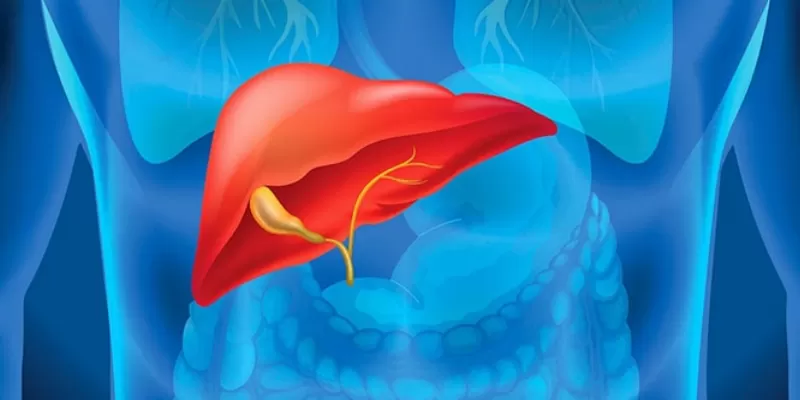Advancing Hepatitis B Cure: A Closer Look at Barinthus Bio's VTP-300 Project


Infections |
15 May 2024
Dr. Nadege Pelletier, Chief Scientific Officer at Barinthus Bio, shares her insights on the cutting-edge development of immunotherapies targeting chronic infectious diseases and cancer. With over 15 years in the field, Dr. Pelletier delves into the innovative use of targeted antigens through Barinthus Bio's specialized platforms, highlighting the promising VTP-300 project in this exclusive Health and Pharma interview. Dr. Nadege Pelletier, discusses the challenges of hepatitis B treatment despite existing vaccines and the potential of new therapeutic strategies to achieve a functional cure.
Dr. Nadege Pelletier on Harnessing T cell Strengths Against Chronic Hepatitis B Infection
Could you discuss current developments and clinical research on HBV treatment and new drug candidates?
Dr. Nadege Pelletier: Despite the availability of an efficacious prophylactic hepatitis B vaccine, there remains a significant global burden of chronic hepatitis B infection, affecting approximately 300 million people. This figure has slightly decreased from 320 million a decade ago, indicating a gradual but not rapid decline. Chronic hepatitis B often leads to severe complications such as liver cirrhosis and hepatocellular carcinoma. It is termed a "silent killer" because many infected individuals remain asymptomatic for decades, unknowingly transmitting the virus.
From a mechanistic standpoint, hepatitis B virus (HBV) has evolved strategies to evade the immune system, notably through the production of very large quantities of the Hepatitis B Surface antigen (HBsAg). This non-infectious particle acts as a decoy, leading to T cell exhaustion as they futilely attempt to eliminate it, ultimately rendering the immune system incapable of controlling the disease.
Current treatments primarily include lifelong administration of direct-acting antivirals, known as nucleoside analogs, or "NUCs," which are generally well-tolerated but achieve a functional cure in only about 10% of cases. Another option, pegylated interferon, is less tolerated and not more effective, highlighting the urgent need for more effective treatments.
Collectively, the field acknowledges that a multifaceted, combinatorial approach, including an immune modulating drug such as VTP-300 as a critical component, is likely essential for achieving functional cure.
This combinatorial approach involves potentially three different mechanisms of action. The first one is inhibiting viral replication, as NUCs currently do, but also developing new agents that target viral capsid and entry receptors. Many pharmaceutical companies are engaged in this area, focusing on inhibiting viral replication from multiple angles.
Another critical mechanism of action involves reducing the HBsAg load, which impacts T cell strength, functionality, and eventually also numbers. Therapeutic developments here include siRNA, antisense oligonucleotides, and monoclonal antibodies, which have shown promise in lowering HBsAg levels effectively.
However, the durability of these effects is limited, with antigen levels often rebounding weeks to months after treatment cessation. To sustain lower HBsAg levels and potentially achieve a functional cure, there is interest in therapies that enhance the patient's T cell responses in the long-term. This area is less developed but includes broad-acting agents like anti-PD-1s and TLR agonists, as well as HBV-specific therapies. One such HBV-specific therapy is VTP-300, an immunotherapy candidate designed to durably stimulate the immune system and control the disease.
In summary, while there are effective treatments for managing HBV, their limitations in achieving functional cures drive ongoing research and development. A combination of direct viral replication inhibition and immune modulation strategies, including innovative approaches to sustain T cell response, are key to advancing treatment and potentially curing chronic hepatitis B.
Given the promising interim data from the HBV003 and AB-729-202 trials, could you elaborate on how the combination of Arbutus Biopharma’s imdusiran and VTP-300 represents a shift in the therapeutic approach to chronic HBV infection?
Dr. Nadege Pelletier: Current thinking in the field emphasizes the need for a combination of complementary mechanisms of action to achieve a functional cure for chronic hepatitis B. We've been evaluating VTP-300 in specific combination trials, both past and ongoing, to test if this treatment approach can lead to a functional cure, and whether VTP-300 is a critical component.
The combinations tested include VTP-300 with anti-PD-1 in HBV003 and with imdusiran, a siRNA to decrease the HBsAg levels, in a clinical collaboration with Arbutus Biopharma. With these, we are exploring different strategies to manage the virus while under standard of care NUCs. The underlying goal is to dampen the HBsAg load with siRNA, giving T cells a break to recover from exhaustion and also allowing new, virus-specific T cells a chance to emerge without viral pressure.
The hope is to trigger a polyfunctional HBV-specific T cell response with VTP-300. If successful, this strategy could transform treatment by keeping the virus in check autonomously, much like how the immune system manages viruses like chicken pox over our lifetime, without medication. This could be a significant breakthrough for patients, allowing their immune system to control the virus before symptoms emerge whenever it becomes active, without the need for chronic treatment.
How do HBV003 trial results, showing significant HBsAg reductions in participants with lower baseline levels, impact future HBV treatment strategies?
Dr. Nadege Pelletier: Our trials with HBV003, and earlier with HBV002, showed that VTP-300 is most effective in patients who have lower baseline levels of HBsAg. We're particularly excited about its combination with siRNA because it expands the pool of patients who can benefit from VTP-300 by initially reducing the HBsAg levels.
Early data presented at the American Association for the Study of Liver Diseases (AASLD) November 2023 indicated that VTP-300 can induce an HBV-specific T cell response and sustain the reduced HBsAg levels achieved with siRNA. This suggests that patients with naturally low antigen levels respond similarly to those whose levels have been artificially lowered using siRNA. While it's still early in the trial, these findings are promising.

The ability of participants treated with imdusiran and VTP-300 to stop NUC therapy is particularly notable. How does this outcome align with Barinthus Bio's goals of improving patient quality of life and moving towards a functional cure for HBV?
Dr. Nadege Pelletier: We're excited about this data, as it shows promise for helping patients gain control over their disease and potentially stop their treatment, which would be fantastic. Although the data we have is still preliminary, we eagerly await more mature results with further data expected shortly at the European Association for the Study of the Liver (EASL) in June 2024. It will be very interesting to see if some patients achieve a functional cure, which would significantly impact their lives.
Could you explain how VTP-300, especially with RNAi therapeutics like imdusiran, guides the immune system to combat HBV?
Dr. Nadege Pelletier: I can’t emphasize enough how notoriously tricky the HBV virus is and its ability to evade the immune system effectively. HBV infections begin slowly and silently, without triggering the strong alarm responses typically seen with other infections. This allows the virus to establish itself without significant initial opposition from the immune system. Compounding this issue, HBV predominantly infects the liver, an organ naturally more tolerant to infections, which further aids the virus's establishment.
Once established, HBV produces numerous decoys, notably the HBsAg, misleading the immune system into attacking these irrelevant targets. This continuous engagement wears down the T cells, leading them into a state of exhaustion. As a result, the available T cells are not only fewer in number, but also poorer in quality, unable to effectively fight and eliminate the infected cells.
Our therapeutic strategy with VTP-300 involves using a combination of treatments to reinvigorate these exhausted T cells and generate new ones. By managing the viral replication with newer treatments and reducing or controlling the HBsAg levels—either naturally or artificially—we create an environment where T cells can recuperate. This recovery allows for the emergence of new, HBV-specific T cells that can effectively respond to VTP-300.
VTP-300 then aims to trigger a robust and polyfunctional HBV-specific T cell response, capable of gaining control over the disease without the virus’s usual evasive tactics. These reinvigorated T cells are designed to target and destroy the infected cells in the liver. Our VTP-300 candidate is crafted to harness this mechanism, and we are eager to see how the clinical results will reflect our designs and expectations.
Barinthus Bio is developing treatments for a range of diseases beyond HBV, including autoimmunity and cancer. Can you share insights into how the research and technologies applied in HBV treatment are influencing your approaches to these other areas?
Dr. Nadege Pelletier: At Barinthus Bio, we are developing innovative immunotherapies focused on harnessing the strengths of T cells to regain control over diseases. Central to our approach is designing our products specifically around the antigens involved in the disease. We utilize two platform technologies for this purpose: a viral vector-based technology combining ChAdOx and MVA.

Our lead product, VTP-300, which employs this combination, has shown potential in generating highly durable, fully functional T cells capable of targeting and killing infected cells. This makes it an excellent candidate for treating chronic infectious diseases and cancer.
We have three product candidates using this technology in different disease areas:
- VTP-300 targets chronic hepatitis B;
- VTP-200 focuses on high-risk persistent HPV infections linked to cancer development;
- VTP-850 is being developed for prostate cancer.
The success of these products could greatly enhance our confidence in applying this approach to other diseases. Additionally, we have developed another platform called SNAP, which is entirely synthetic and not based on viral vectors. This platform is versatile, allowing for the targeting of specific diseases through tailored antigens and immunomodulators. The primary application of SNAP is for tolerance induction in autoimmunity, effectively inducing regulatory T cells while dampening autoreactive immune cells.
Our leading SNAP-TI candidate, VTP-1000, is set to enter trials for celiac disease soon; success here could open avenues for addressing various autoimmune disorders. We are continually learning from each program to enhance our future pipeline of treatments.
Looking forward, what are Barinthus Biotherapeutics' long-term goals in the fight against HBV and other chronic infectious diseases? How do you envision the company's impact on global health outcomes in the next decade?
Dr. Nadege Pelletier: We see significant potential to impact various areas, particularly through our candidates, such as VTP-300 from our vector platform and VTP-1000 from our SNAP-TI platform. We have analyzed diseases that align with the mechanisms of action of our platforms and their pathogenesis, and our innovations could open doors to numerous applications. Depending on the success of these platforms, we aim to expand into other areas we have identified and are optimistic about our potential and eagerly anticipate future developments.
Could you provide us with an overview of your background and some general information about your research?
Dr. Nadege Pelletier: I've spent the past 15 years in major pharmaceutical companies focusing primarily on immunomodulation strategies to balance the immune system in chronic infectious diseases. My work began with chronic hepatitis B and expanded into autoimmunity, both of which involve a disrupted immune balance, leading to severe diseases. A year ago, I transitioned to Barinthus Bio, marking my first experience in a smaller biotech firm.
As Chief Scientific Officer at Barinthus Bio, I oversee research and development, clinical biomarkers, and manufacturing. Our approach aligns closely with my previous work, concentrating on novel therapeutics that leverage T cell strengths to naturally and specifically manage diseases.
Our products are designed to target specific antigens related to the disease, using two technological platforms: ChAdOx and MVA, both of which support our VTP-300 project. This approach is particularly effective for chronic infections and cancer, promoting the development of polyfunctional T cells that target and eliminate diseased cells. This method has shown to produce durable effects, with T cells active for up to two years post-treatment.
Additionally, we have a newer platform called SNAP-TI, with advanced applications in tolerance immunotherapy. This is particularly suited for autoimmune diseases, where it fosters regulatory T cells and reduces overall T cell reactivity. This strategy aims to reverse the immune imbalance in a manner opposite to that used for chronic infectious diseases.








Comments
No Comments Yet!